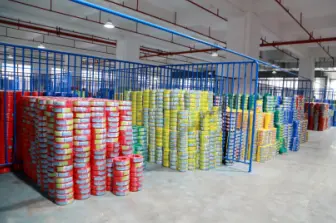What to Do if There Is a Fault in the Low-Voltage Cable?
A control cable is a cable that maintains power circuitry. The key material used in this type of cable is polyethylene, which has excellent insulation properties. These cables can operate normally under a rated working voltage of 450/750 volts, allowing for effective control of circuit operation. The application of control cables is widespread, including industrial and mining enterprises, companies, and large power units.
Performance of control cables:
Control cables are waterproof, corrosion-resistant, and damage-resistant, making them suitable for installation in tunnel construction or cable trenches. Control cables have low working voltage and current requirements and are highly resistant to interference. The rated current is usually 450/750 volts, and there are many cable types available. According to specifications, they usually have 61 cores, but they can be customized based on customer requirements. The cross-sectional specification is generally small for control cables. For areas with strict requirements, control cables with shielding layers can be used. Control cables have a maximum permissible operating temperature of 70°C, and the delay time during short-circuit faults should not exceed 5 seconds. The highest temperature of the cable conductor should not exceed 160°C. The working temperature during cable laying should be above 0°C, otherwise preheating is required.
Wiring requirements for control cables:
Eaves: Control cables can be used in a specified local area network cable if they are not immediately exposed to direct sunlight or high temperature and pressure. It is recommended to use conduits. Cables without UV protection should not be used in natural environments where they are exposed to sunlight.
Outer walls: Prevent direct sunlight and human-caused damage to the outer walls. The temperature inside metal conduit or cable trays is high, and many aggregating materials can reduce their service life at such temperatures.
Pipes (plastic or metal): If cable is inside pipes, pay attention to the damage of plastic pipes and heat transfer in metal pipes. Repairing optical fiber control cables is expensive, and at least two wire connections are required at each interval point.
Suspended/overhead cables: Consider cable slack and operating pressure. Determine whether the cables are directly exposed to sunlight.
Underground cable trenches: This type of environment has limited scope for operation. Cable trenches should be regularly checked for dryness or wet cooling levels. If the shielding layer of the control cable must be grounded, corresponding specifications must be followed.
Underground pipes: To facilitate future upgrades, cable replacement, and protection against working pressure and surrounding environmental factors, auxiliary conduits provide good protection. However, do not expect the conduits to remain dry at all times, as this will affect the selection of cable types.
Latest News & Blog
 English
English  français
français  Deutsch
Deutsch  العربية
العربية  tiếng việt
tiếng việt  ไทย
ไทย  čeština
čeština  Indonesia
Indonesia  Eesti
Eesti  български
български  slovenčina
slovenčina 



